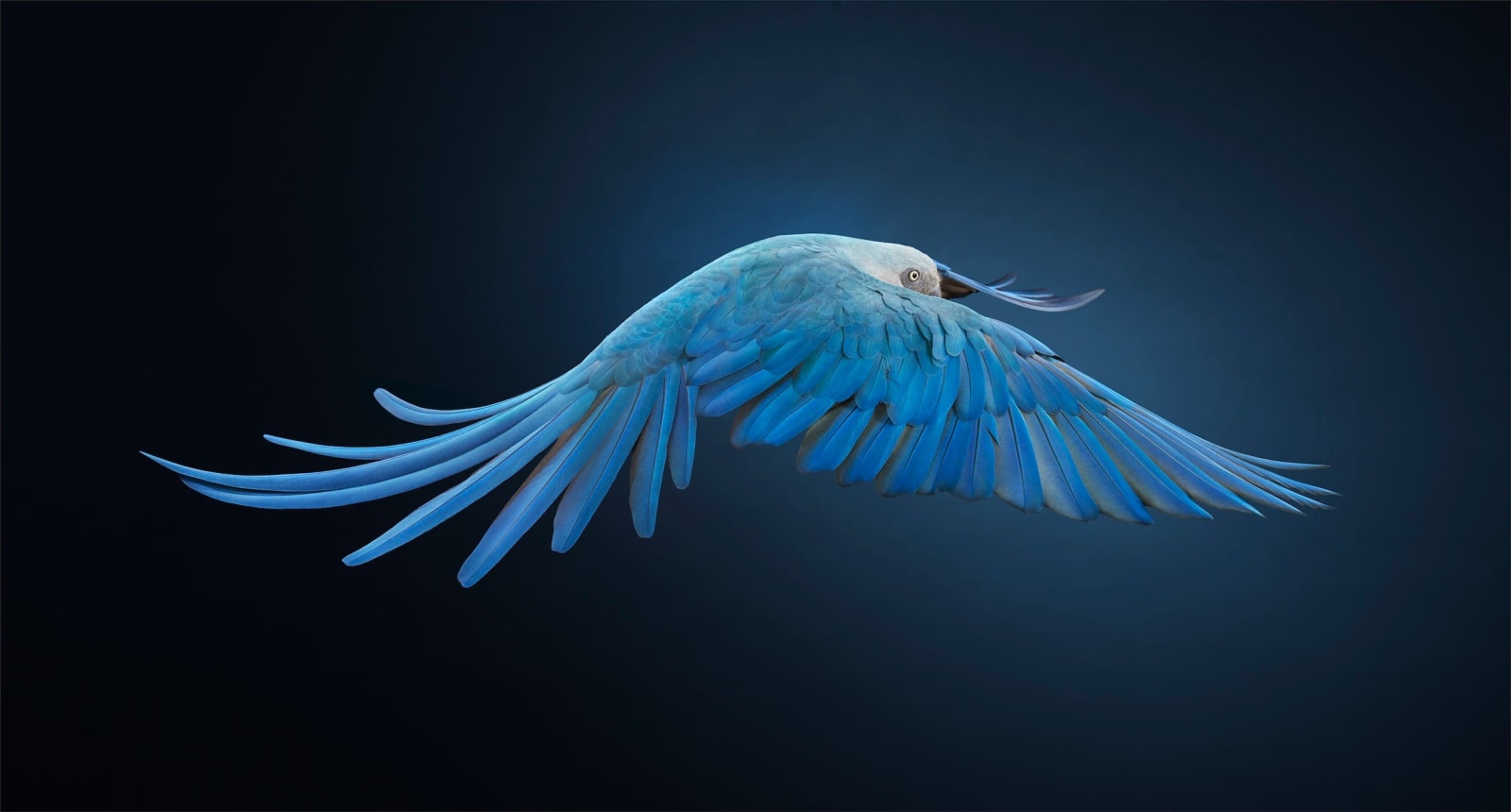Tim Flach Britannique, 1958
Spix's Macaw, Side On, Unextinct, 2022
Série: Birds
C-Type print
77.73 x 144.5 cm
30 5/8 x 56 7/8 in
30 5/8 x 56 7/8 in
Edition of 5 plus 2 artist's proofs
47.3 x 88 cm
18 5/8 x 34 5/8 in
18 5/8 x 34 5/8 in
Edition of 10 plus 2 artist's proofs
Plus d'images
The Spix’s little blue macaw — extinct in the wild for 22 years — now flies free again in its natural habitat in Brazil, thanks to decades of research and effort by hundreds of scientists, conservation biologists, veterinarians, aviculturists and indigenous peoples.
Over 22 years after the last sight if a Spix Macaw in the wild, the Spix Macaw was introduced from captivity to its natural habitat in Brazil. Tim Flach was invited to photograph the Spix Macaw to help raise funds for project and document it.
Tim and his team travelled across Europe by van to capture the Spix’s Macaw at the ACTP e.V. breeding facility near Berlin. Before setting off, the team had spent an entire weekend constructing a specialized aviary designed to encourage the birds to fly in a circular motion – enabling the team to capture the rare beauty of the Spix’s Macaw in a way that has never been seen before. Two weeks later on the 11th of June, Tim was in Caatinga, Brazil to document the reintroduction of the birds back into the wild.
Through the release of a series of NFTs, Tim’s support of the project has raised approximately £100,000.*
______
Plus de 22 ans après avoir vu le dernier Ara de Spix voler en liberté, cet oiseau a été ré-introduit dans son milieu naturel au Brésil. Tim Flach fut invité à photographier l'ara afin de lever des fonds pour ce projet et le documenter.
Tim et son équipe ont voyagé à travers l'Europe en van afin de photographier l'ara de Spix au ACTP e.V, un centre d'élevage en captivité près de Berlin. Avant de partir, l'équipe passa tout un weekend à construire une volière spécialisée, destinée à encourager le vol en motion circulaire. Le but fut de capturer la beauté de l'oiseau d'une façon inédite. Deux semaines plus tard, Tim se rendait à Caatinga, au Brésil, pour documenter la réintroduction de cette espèce dans la nature.
Grâce à une série de NFT, l'artiste a collecté plus de £100,000 de fonds de soutien à ce projet.
Tim and his team travelled across Europe by van to capture the Spix’s Macaw at the ACTP e.V. breeding facility near Berlin. Before setting off, the team had spent an entire weekend constructing a specialized aviary designed to encourage the birds to fly in a circular motion – enabling the team to capture the rare beauty of the Spix’s Macaw in a way that has never been seen before. Two weeks later on the 11th of June, Tim was in Caatinga, Brazil to document the reintroduction of the birds back into the wild.
Through the release of a series of NFTs, Tim’s support of the project has raised approximately £100,000.*
______
Plus de 22 ans après avoir vu le dernier Ara de Spix voler en liberté, cet oiseau a été ré-introduit dans son milieu naturel au Brésil. Tim Flach fut invité à photographier l'ara afin de lever des fonds pour ce projet et le documenter.
Tim et son équipe ont voyagé à travers l'Europe en van afin de photographier l'ara de Spix au ACTP e.V, un centre d'élevage en captivité près de Berlin. Avant de partir, l'équipe passa tout un weekend à construire une volière spécialisée, destinée à encourager le vol en motion circulaire. Le but fut de capturer la beauté de l'oiseau d'une façon inédite. Deux semaines plus tard, Tim se rendait à Caatinga, au Brésil, pour documenter la réintroduction de cette espèce dans la nature.
Grâce à une série de NFT, l'artiste a collecté plus de £100,000 de fonds de soutien à ce projet.













